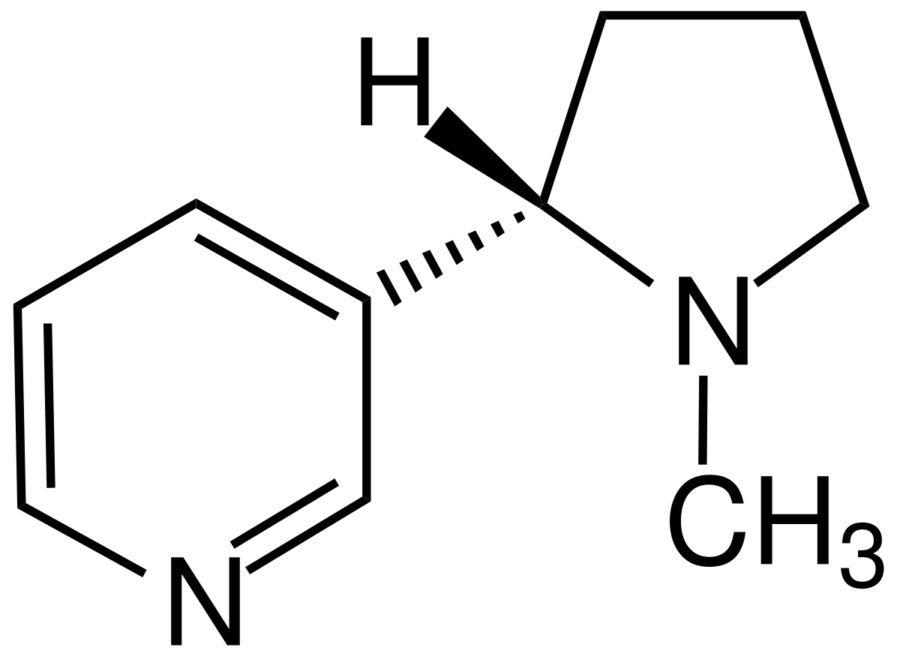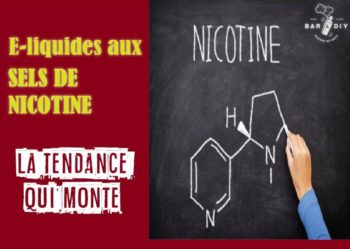
Everyone has heard of this molecule at least once in their lives. Whether you're a smoker, a non-smoker or even an anti-smoking campaigner, everyone knows about this component of tobacco. Often directly associated with tobacco and even regularly blamed (wrongly) for smoking-related illnesses, nicotine is an entirely natural molecule. Present in the wild in many plants of the Solanaceae family (tomato, potato, eggplant, bell pepper, etc.), it is a molecule that acts as an insecticide and a defense agent for its host. The nicotine we consume is purified to become pharmaceutical-grade nicotine. This means it is 99.99% pure. It's this version of nicotine that we find in the classic cigarette, but also in all its substitutes, such as e-cigarette liquids, patches and chewing gum. Yes, in all these products, the nicotine molecule is always exactly the same, only the mode of absorption changes.
Methods of absorption
The fastest way for nicotine to reach the receptors in the brain is via the lungs. This means that the best way to overcome nicotine withdrawal quickly and correctly is to smoke it. Nicotine is transported very efficiently through the respiratory system by the fine tar molecules contained in cigarette smoke. It should be noted that when nicotine is ingested directly, the liver eliminates 70% of it, so oral consumption (via the digestive tract) is almost useless./p>
The effects of nicotine
Nicotine is not in itself harmful to the human body. It is its consumption through the combustion of a cigarette that is toxic. When a person smokes a conventional cigarette, nicotine takes between 10 and 20 seconds to reach the brain. It then increases blood pressure and heart rate, and triggers the release of adrenaline, resulting in a sensation of excitement after ingesting it.
Once in the brain, the molecule binds to specific receptors, notably those involved in the reward system. This is the feeling of well-being that a smoker briefly experiences after the first inhalation.
When using an e-cigarette, nicotine is carried in the vapor and does not penetrate the bloodstream to the lungs as well. This is because the steam is much thicker than the fine tar particles of a conventional cigarette, making it harder for it to pass through the mucous membranes and alveoli of the lungs.
On the other hand, one of the perverse effects of nicotine is the habituation and addiction it can quickly provoke in smokers. This is also one of the reasons why it is used by cigarette manufacturers the world over.
The classic cigarette and its combustion
Regardless of the type of plant or vegetable burned, their combustion will always release the same toxic components: tars (the leading cause of cancer), carbon monoxide (a highly toxic gas in high concentrations) and other oxidizing gases dangerous to the cardiovascular system. In the case of electronic cigarettes, there is no combustion and therefore no release of harmful products. We're not saying that e-cigarettes are totally harmless to the human organism, but they are at least 95% less dangerous. When it comes to quitting smoking, e-cigarettes are the best substitute for conventional cigarettes, because they are used in the same way as their combustion cousins. The sensation of inhaling, of "hitting", of spitting out "smoke" and the way nicotine is absorbed are very similar to those of a normal cigarette. This means less withdrawal and frustration when trying to quit smoking.
Nicotine in e-cigs
Since the advent of the electronic cigarette, equipment and liquid manufacturers have been studying different absorption vectors for nicotine, in an attempt to achieve the same effect as with conventional cigarettes. In the end, the best way for this molecule to be consumed by the human body is via the respiratory tract.
Once this was defined, however, these companies developed different forms of nicotine to try and improve its penetration: nicotine salts, snus, chewing tobacco, etc... A popular belief is that nicotine in the form of salts (solid) satiates the brain better. This is partly true, but it is mainly due to the much higher nicotine levels in these products. A vaper with 6-9mg/ml nicotine in his liquid will be very surprised when consuming salts, whose levels tend to average around 20mg/ml.
Conclusion
In conclusion, nicotine is a natural substance of which the use and the goal can be hijack to satisfy human need. It is not toxic by itself (unless it is ingested is big quantity) but provokes very quickly a dependency. The best way to absorb it still is by respiratory tract because il it the shorter way to brain. Then it fixes on receivers in the reward system and provokes this euphoric state to smokers. So to use nicotine, let's vape !
L'équipe BAR à DIY

Salt nicotine is a blend of nicotine and benzoic acid, an organic acid used as preservative.
Read more
By entering this website, I certify that I am over 18 years old and authorized by my country legislation to purchase products that contains nicotine.
This website uses cookies in order to offer you the best user experience possible. Continue means that you agree our terms of use.